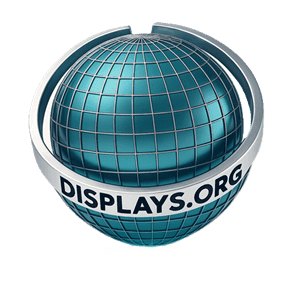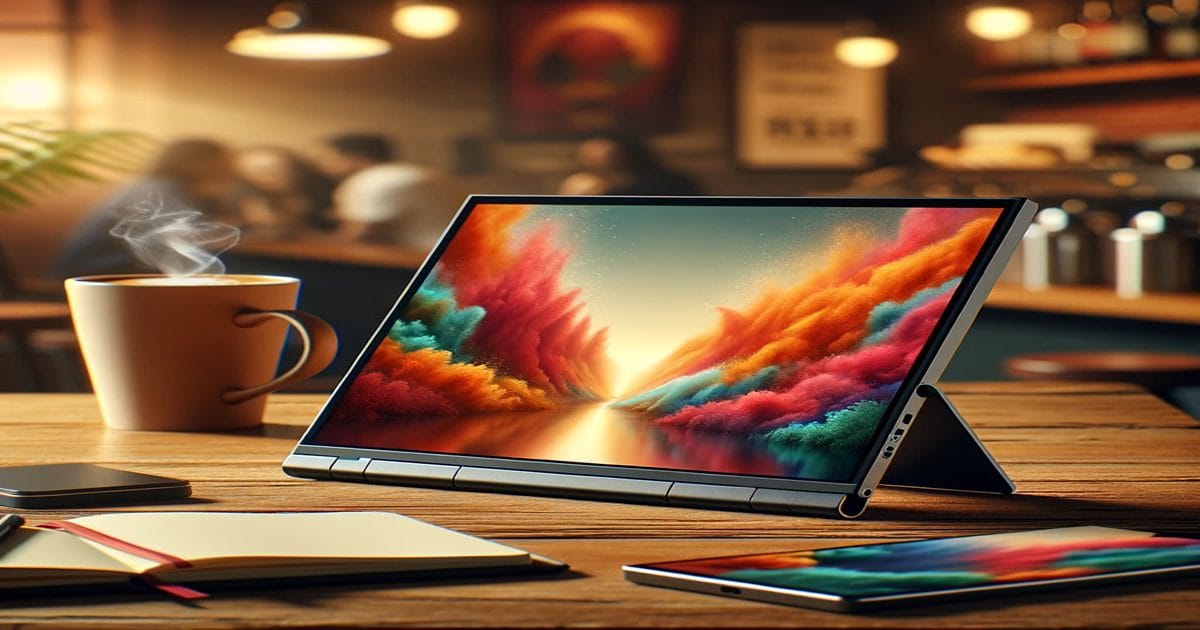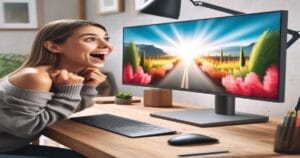On the Go Light Portable Monitors for Productivity
Whether you are a digital nomad, a traveling professional, or simply someone who wants the flexibility to work and play on your own schedule, portable monitors can reshape your productivity like never before. Gone are the days of being tethered to a single desk. With lightweight displays that slip into backpacks and briefcases, you can transform any space into a functional workstation or entertainment hub.
This comprehensive guide explores everything you need to know about leveraging these versatile portable monitors for maximum efficiency and comfort. We’ll discuss how they enhance workflows, the pivotal features that matter most, real-life application scenarios, and how you can pair them with other tools—like mini PCs or laptops—to enjoy a truly modern on-the-go lifestyle.
Want a Quick Glance at the Best Picks?
Explore a curated selection of Portable Monitors in General right now:
1. Introducing Portable Monitors
Portable monitors are slim, lightweight secondary displays designed for mobility. Unlike traditional, bulky desktop monitors, these streamlined screens emphasize compact form factors, energy efficiency, and versatile connectivity (often via USB-C or HDMI). Whether you’re traveling for business presentations, remote work sessions, or seeking a simpler way to extend your laptop’s screen for entertainment, portable monitors can instantly enhance your display real estate without hefty hardware.
Over the years, improvements in panel technology have made these monitors sharper, brighter, and more color-accurate. High-definition resolutions, vibrant color reproduction, and even features like touch sensitivity or built-in speakers are now prevalent. Many portable models come with protective cases that fold into stands, making them easy to use anywhere—from airports to coffee shops to client offices.
Also noteworthy is how the concept of “work-from-anywhere” has accelerated innovation in portable displays. Manufacturers now tailor certain models specifically for productivity tasks, others for gaming, and some for creative workflows like photo editing. This specialization means you can find a portable monitor that truly aligns with your unique needs.
Table: Portable vs. Traditional Monitors
| Criteria | Portable Monitors | Traditional Monitors |
|---|---|---|
| Size & Weight | Light, 13–17 inches typically | Larger, heavier, 19–32+ inches |
| Portability | High, easily stored | Low, desk-bound |
| Connectivity | Often USB-C, mini-HDMI | HDMI, DisplayPort, more variety |
| Ideal Users | Remote workers, travelers | Home/Office-based setups |
| Use Scenarios | On-the-go, presentations, second screen | Permanent desk, gaming station |
2. Transforming Productivity on the Go
For anyone juggling multiple windows or tasks simultaneously, the ability to view reference documents or chat screens on a separate display is invaluable. Portable monitors provide the dual-screen efficiency previously limited to home offices. You can keep your email or research on one screen and your primary work on another, boosting workflow exponentially and minimizing the mental friction of constantly alt-tabbing.
Consider a marketing consultant who travels frequently: Instead of tabbing back and forth between spreadsheets and presentations on a laptop, a compact second monitor allows real-time cross-referencing of data. Similarly, coders can keep code editors on one screen and debugging consoles or documentation on another. The result is less screen clutter, fewer missed details, and more efficient task management overall.
Education & Collaboration
University students benefit significantly by having notes or online research on one display while drafting essays on the other. Collaboration also improves—small group sessions can revolve around the portable monitor for instant viewing of shared documents or slides. Whether it’s a science project or a design brainstorming session, the dual-screen approach amplifies clarity and communication.
Quick Access to Critical Apps
Many professionals rely on chat apps, email clients, or real-time analytics. Keeping these open on a second screen ensures they remain visible without crowding your primary workspace. If your role requires you to monitor Slack conversations, marketing dashboards, or support queues, a portable monitor can keep you updated without derailing your main tasks.
Media & Leisure
Working on location doesn’t mean sacrificing entertainment. When the day’s tasks wind down, you can repurpose your portable monitor for streaming videos or gaming. It’s a perfect solution for remote travel—watch movies comfortably in your hotel room instead of squinting at a small laptop screen.
Want a Productivity Boost?
Explore top-rated Business Portable Monitors for ultimate multitasking:
3. Key Features to Look For
While portable monitors might seem similar at a glance, critical distinctions can drastically affect your experience. Here’s what to consider:
- Size & Weight: Typically 13–17 inches. Balance screen real estate with portability. Larger screens help multitasking but may be heavier to carry.
- Resolution & Panel Tech: Full HD is common; 4K options exist for creative tasks. IPS panels offer better color and viewing angles; TN panels are budget-friendly but less vibrant.
- Connectivity: USB-C for power + video is popular; some add mini-HDMI. Confirm your device’s ports. USB-C with pass-through charging can power your laptop/phone simultaneously.
- Refresh Rate & Response: Gamers or action-video viewers might want 120Hz+ and low response times for smoother visuals.
- Touchscreen Support: Designers or note-takers might prefer direct screen interaction. Certain models support stylus input.
- Battery vs. Powered: A few portable monitors have internal batteries. Others need a power source. Choose based on how mobile your workflow is.
- Folding Stand & Cover: Many come with a foldable cover or built-in stand. Look for a stable design that offers comfortable viewing angles.
Balancing these factors ensures your chosen portable display matches your performance needs and daily usage patterns without adding excessive weight or complexity.
Table: Feature Priorities for Different Users
| User Type | Primary Needs | Key Features |
|---|---|---|
| Professional/Business | Email, spreadsheets, presentations | Lightweight, good brightness, easy fold cover |
| Creative/Designer | Color accuracy, large workspace | IPS panel, 100% sRGB, possible 4K resolution |
| Gamer | Fast response, high refresh | 120Hz/144Hz, low ms, robust stand |
| Student/Traveler | Portability, budget-friendly | Compact size, USB-C single cable |
4. Seamless Connectivity & Device Pairing
One hallmark of modern portable monitors is their near plug-and-play simplicity. A single USB-C cable often supplies both power and the video signal, minimizing cable clutter. Alternatively, an HDMI-to-mini-HDMI cable is also common, though that usually requires a secondary USB line for power.
Below is a quick connectivity guide:
| Connection Type | Devices Supported | Notes |
|---|---|---|
| USB-C (Alt Mode) | Laptops, tablets, newer smartphones | Single-cable solution; check PD pass-through for charging |
| Mini-HDMI | Older laptops, gaming consoles | Needs separate USB for power |
| DisplayPort over USB-C | High-end laptops & PCs | Supports higher bandwidth, ideal for 4K or high refresh |
For mobile devices, many modern smartphones support Desktop Modes (e.g., Samsung DeX), letting you run a near-desktop experience on a portable monitor. This feature can eliminate the need for a laptop, transforming your phone into a multitasking workstation.
Looking for Gaming-Grade Displays?
Check out High-End Gaming Portable Monitors for advanced refresh rates:
5. Scenarios & Use Cases
Business Presentations & Conferences
Professionals can carry a portable monitor to client meetings, enabling them to display slides or data. This cuts reliance on possibly outdated meeting room equipment. Additionally, a personal secondary screen ensures you can keep an eye on speaking notes while presenting on the main screen.
Travel Bloggers & Content Creators
Editing photos or videos on the go is simpler with a second screen. Keep editing tools on one display while previewing content in real time on another. This drastically reduces missed details and speeds up workflow—essential for creators under tight deadlines.
Gaming on the Go
Whether at a friend’s house or a gaming café, hooking up a portable monitor to your Nintendo Switch, PlayStation, or gaming laptop is far more convenient than hauling a full-size monitor. Competitive gamers also benefit from consistent display performance for tournaments.
Remote Classrooms
Students can keep lecture feeds on one monitor while taking notes or browsing references on another. Teachers can use a portable display to mirror or extend content, enhancing clarity for in-person or hybrid classes.
Table: Common Use Cases & Benefits
| Use Case | Primary Benefit | Why a Portable Monitor? |
|---|---|---|
| Business/Professional | Dual-screen for data & presentation | Lightweight, easy setup, ensures consistent display quality |
| Creative Work | Real-time preview, second screen for tools | Better color accuracy than small laptop screens, splits workspace |
| Gaming/Entertainment | High refresh rate or added display for console | Portable but powerful, easy to bring to events |
| Educational/Remote Classes | Separates lecture feed and notes | Improves organization, fosters collaboration |





